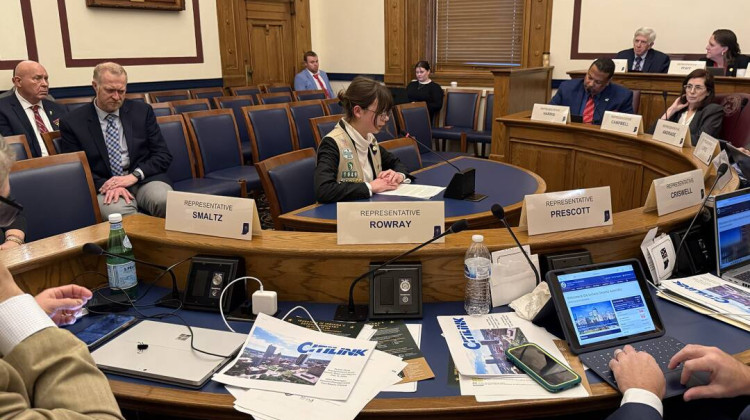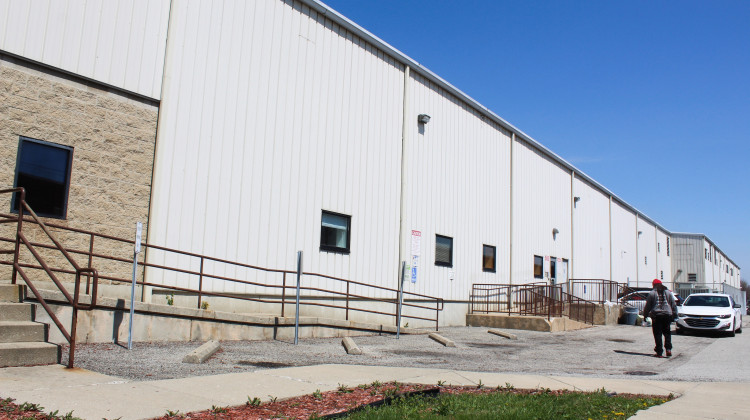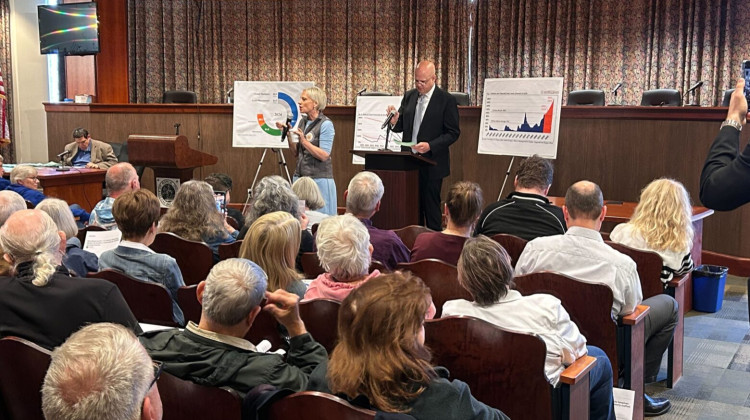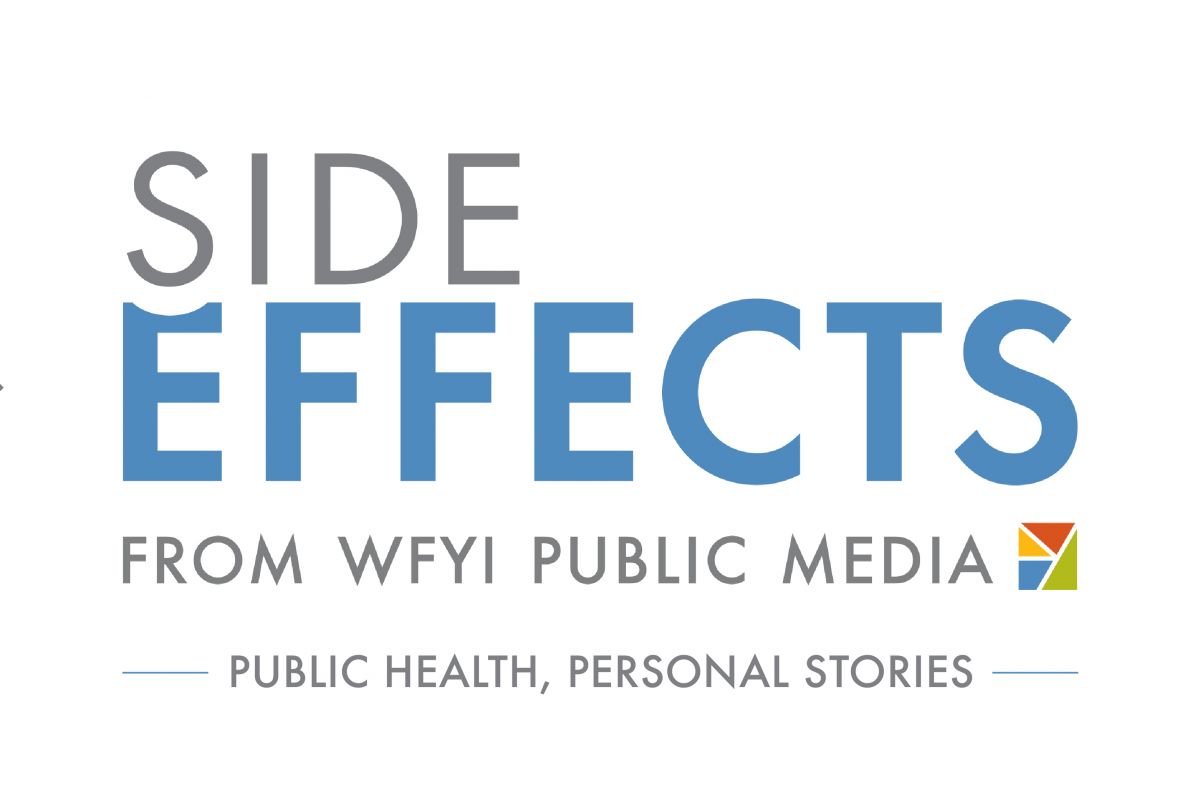
The Jacobsville neighborhood of Evansville is beginning to bounce back from decades of blight and a lengthy lead cleanup process. Here, new veterans' housing mingles with EPA-laid sod and lingering vacant homes.
Annie Ropeik/IPBAs places such as East Chicago, Indiana, grapple with lead contamination, they face a challenge for after cleanup: how to redevelop and revitalize once-toxic neighborhoods.
In Evansville, community leaders have used decades of remediation to their advantage.
In what was once the most-contaminated part of the city’s Jacobsville Neighborhood Superfund site, a vacant lot sits waiting.
“So as we’re standing here right now, we’re standing where Garfield Commons will be,” says Chris Metz, assistant director of Evansville’s ECHO Housing Corporation.
He gestures proudly at the sod covering the lead-free ground. The 44-apartment complex ECHO is building here will provide housing for employees of big nearby companies, such as Deaconess Hospital, Vectren and Berry Plastics.
ECHO also built new housing around the corner for formerly homeless, disabled veterans, and the organization’s offices and another low-income complex sit nearby. The nonprofit and the city hope to return this area to a vitality it hasn’t known in decades.
“We do have some kind of dilapidated housing in the area. We have older housing stock that’s visible from right here,” Metz says. “But [Garfield Commons] is going to be a brand new, gleaming, shining complex … so this is going to impact the people that live here, but this also should have a substantial economic impact on the community, as well.”
His boss, ECHO executive director Stephanie TenBarge, says all this is thanks to the Environmental Protection Agency.
An Expensive Obstacle
The companies that caused the contamination can’t pay to clean it up – they went out of business decades ago – so the EPA is footing the entire estimated bill of $156 million.
If any developer had faced even a fraction of that, TenBarge says, “this would just have been a contaminated neighborhood forever.”
The EPA made 4.5 square miles around Jacobsville a Superfund site in 2004, after state officials discovered that lead dust from old foundries spread into the yards of thousands of homes. Eighty-three were so hazardous, they required emergency cleanup in 2007.
Since then, the EPA has cleaned more than 2,000 additional Jacobsville homes. It’s not addressing every site – the contamination isn’t severe enough to make the cut at non-residential properties.
Local Voices, Local Input
The EPA’s Midwest Superfund chief, Donald Bruce, says locals played an unusually big role in shaping those plans – and in making sure Jacobsville could become more than a landfill or industrial space.
“Here, you’ve got a residential cleanup that’s interspersed throughout the community,” Bruce says. “So I think, in that respect, the reuse that we’re seeing is somewhat unique.”
click to expand
The EPA’s main partner in public outreach about that cleanup was the Jacobsville Area Community Corporation, which retired local pastor Joe Easley helped to form. He says viewing the Superfund as a help, not a hindrance, wasn’t always easy.
“People in the area were hesitant to have it identified as a Superfund site, because they thought, ‘Oh my god, that’s going to say we’re a contaminated area,’” Easley says. “Well, we were a contaminated area, and the only way to get funds to fix it was to designate it a Superfund site.”
Easley says the slow cleanup process stalled some pre-existing plans, but also created more time to think bigger and longer-term. He says Jacobsville also had to build collaborations with the city and big local businesses.
“I’d like to think that government would listen to the concerns of ordinary citizens and citizens in poor neighborhoods, but the fact is, that doesn’t carry as much weight as big voices,” Easley says. “And organization – an organized community gets more done.”
Slow, Steady Progress
Jacobsville is still in transition, years into the redevelopment planning process and with cleanup more than halfway done. It has high crime and poverty rates, and only a small fraction of the people who work here live here, too.
“This neighborhood needed to lift itself up out of that disinvestment,” says city development director Kelly Coures.
And he says the plans to make that happen are starting to bear fruit. He’s surveying construction on North Main Street, an artery through Jacobsville connecting downtown to the city’s north side.
“This is 16 blocks, it’s exactly one mile, and it’s the most innovative road project Evansville’s ever undertaken,” Coures says, pointing out the new bike lane and other upgrades now taking shape.
It took years for this project to start, as Coures says the city worked to balance remediation with redevelopment. But, he remembers one city councilor asking:
“Where is the neighborhood gonna be in 10 years if we don’t do this? If we don’t start the land bank, if we don’t clear the blight out, if we don’t resurrect this street and make it something new and urban and interesting?” Coures says. “What happens then?”
One thing’s for sure – Jacobsville will still be dealing with lead contamination. The EPA has at least 2,000 more homes to clean up. They estimate they’ll need 5 to 10 years to do it.
 DONATE
DONATE








 Support WFYI. We can't do it without you.
Support WFYI. We can't do it without you.